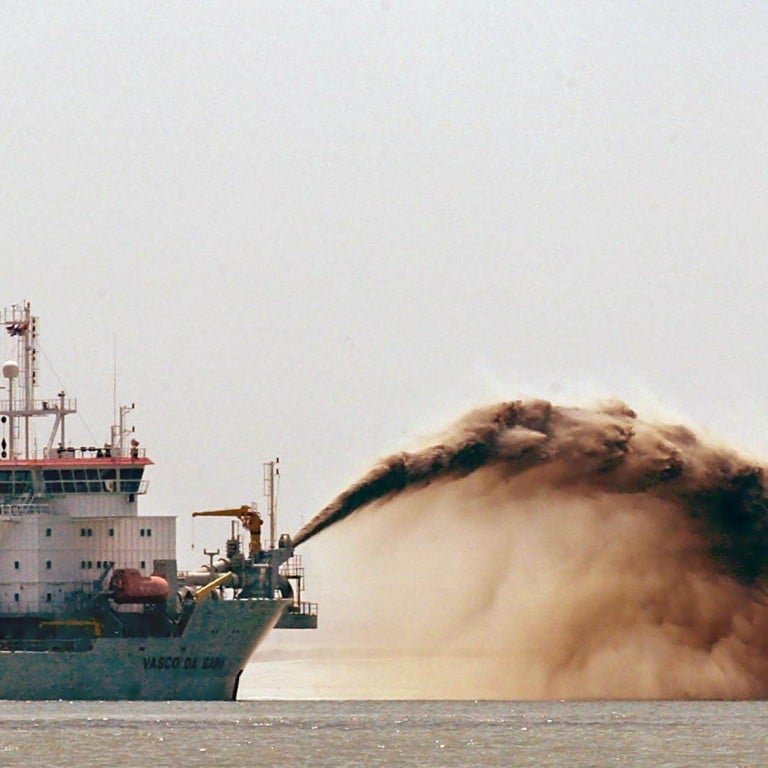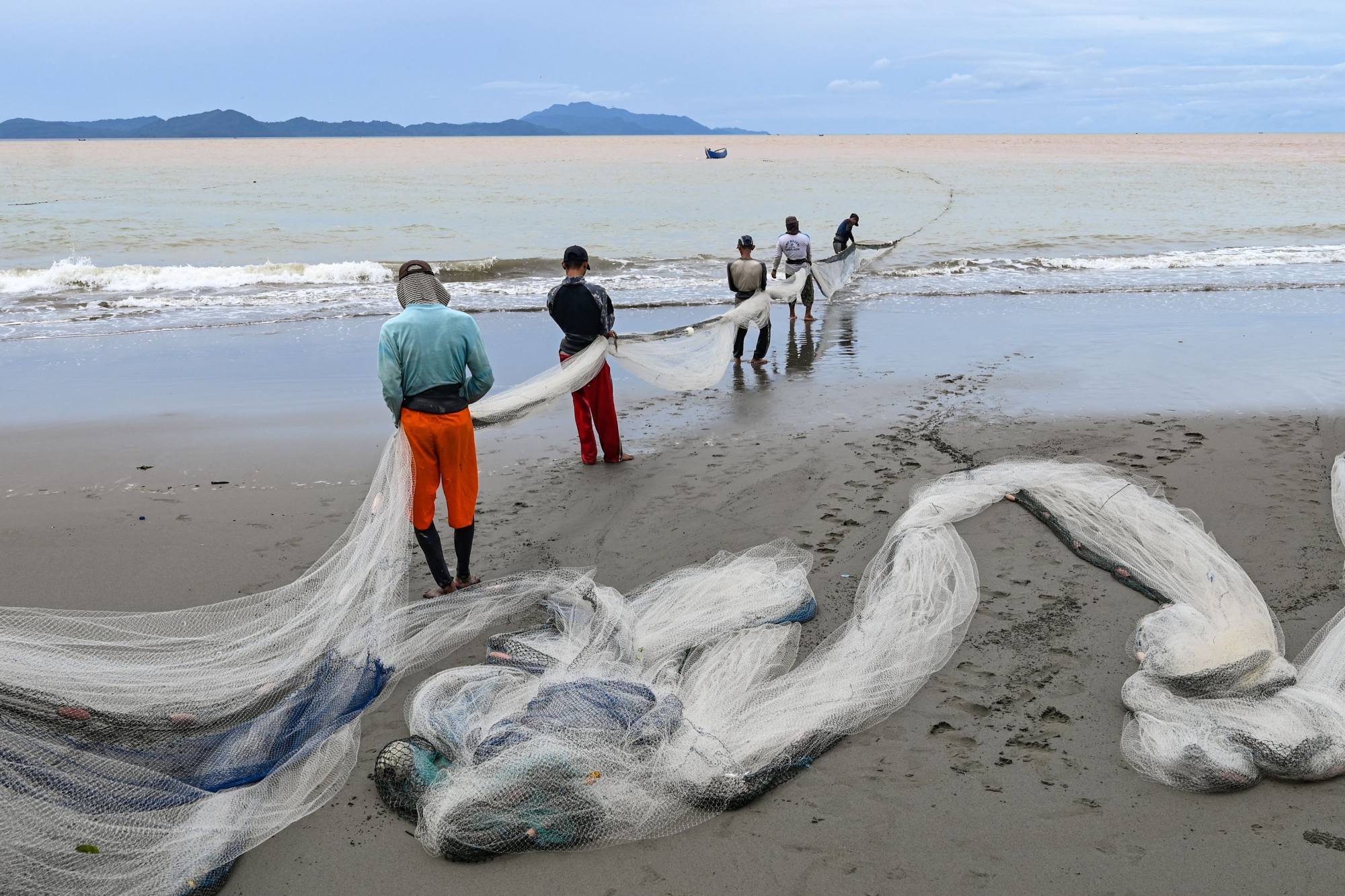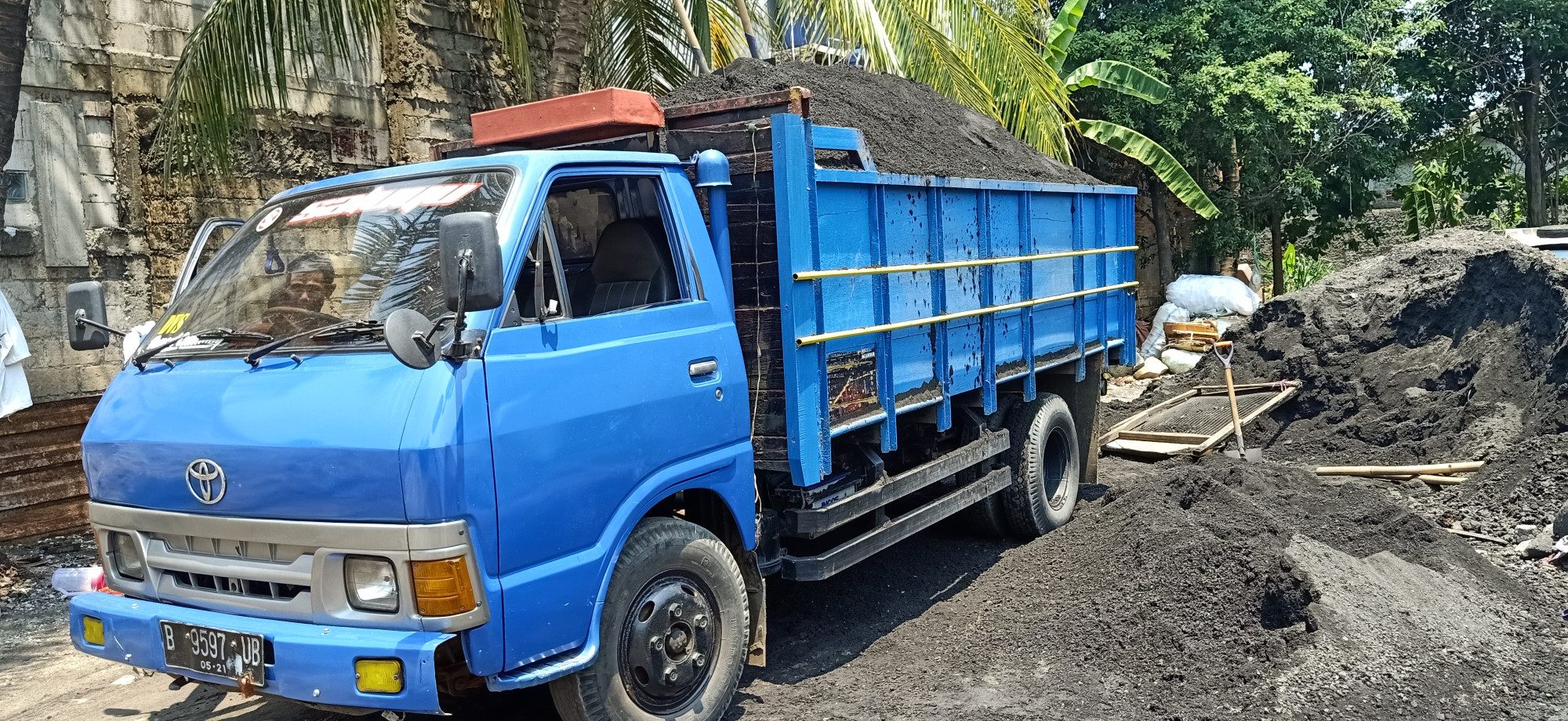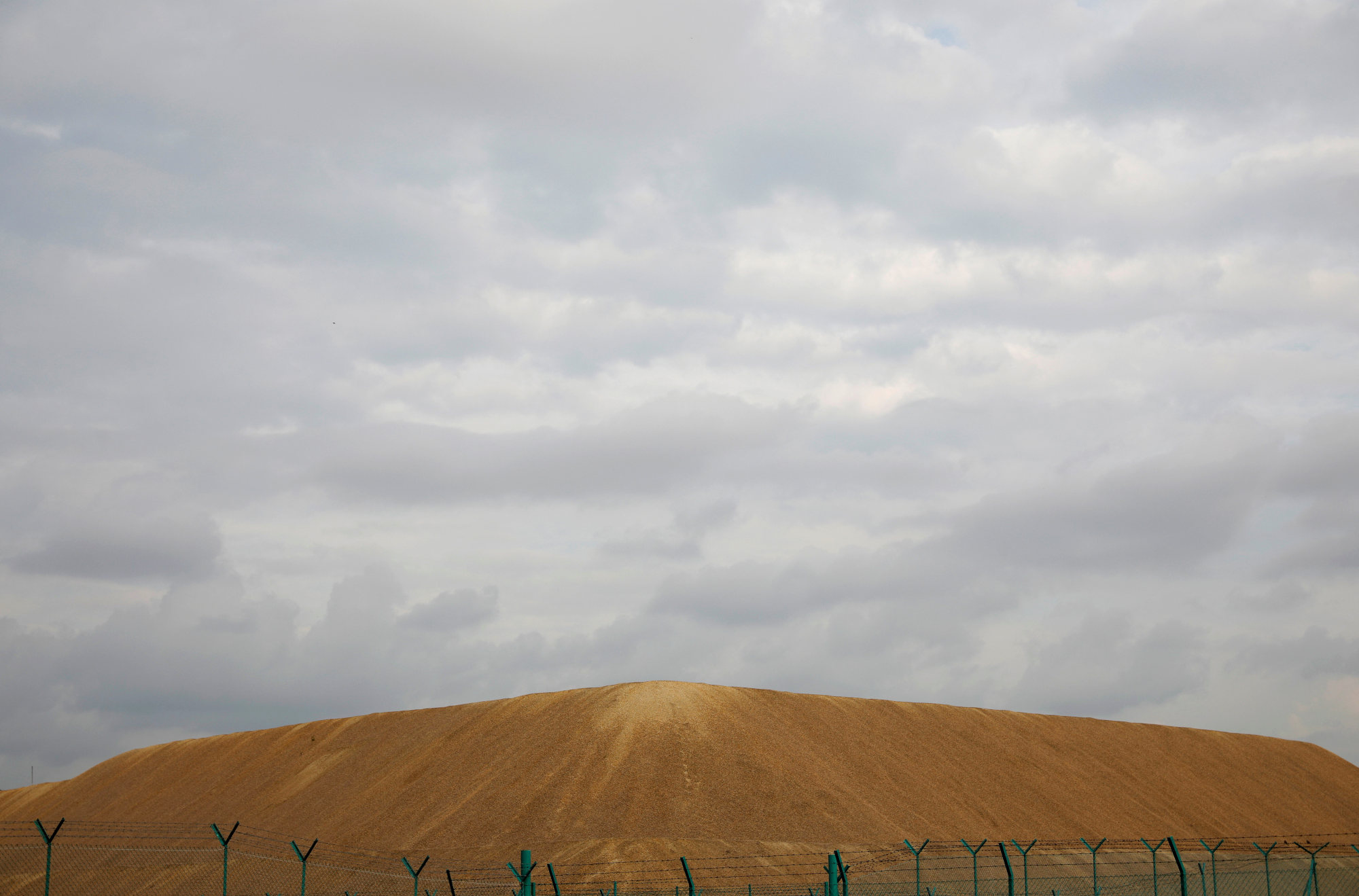
Indonesian fishermen, activists fear loss of marine life, islands as sea-sand exports resume
- Activists and coastal dwellers warn that restarting exports threatens fishermen’s livelihoods and could hasten loss of Indonesia’s many small islands
- Sea-sand mining activities will also contribute to rising sea levels and worsen the climate crisis in Indonesia, environmentalists say
The last time dredging vessels came to Rupat Island, the Indonesian island’s coast was pillaged for its sea sand, says fisherman Eriyanto, who saw his income shrivel as the seabed – and the ecosystem it shelters – was scooped up for sale.
“We beg the president to revoke the sea-sand export permit. We are just traditional fishermen looking for a bite to eat for our families. The government must think about us people who live on small islands. Our small islands should be protected, not damaged,” Eriyanto said.
Singapore, 250km across the sea from Rupat Island, is among the world’s largest importers of the sea sand that’s essential to its massive reclamation ambitions. Even as Eriyanto fears parts of his small island will be dissolved by Indonesia’s reversal of the export ban, the city state could be poised to benefit.

Singapore tipped to gain
Indonesia was a major supplier of sea sand for land expansion in Singapore, shipping more than 53 million tonnes on average per year between 1997 and 2002.
But environmental concerns and a need to protect its borders led to a ban in 2003, and Indonesia reaffirmed the ban in 2007 in a move against illegal shipments.
Restarting sea-sand exports to Singapore might once again bring in revenue for Indonesia, while also aiding Singapore’s land reclamation efforts, including the third phase of its Tuas Port mega project.
Boon for Singapore as Indonesia scraps 20-year ban on sea sand exports
That might be set to change. Riau Islands’ Sea Sand Miners Association Chairman Heri Tosa said Singapore was the Indonesia-based association’s primary market for sea-sand exports, and that Hong Kong was also looking for sand for land reclamation projects, according to The Jakarta Post.
But calls are mounting from environmentalists and coastal dwellers in Indonesia for the government to reconsider the regulation, warning that it threatens fishermen’s livelihoods and could hasten the loss of the country’s many small islands.
Our government is not taking into account the impacts of the climate crisis when making these policies
Data from Indonesia’s Ministry of Maritime Affairs and Fisheries stated that up until 2009, as many as 26 small islands in the Riau region had disappeared due to coastal abrasion caused by large-scale sea-sand mining.
“Selling sea sand to countries abroad allowed them to reclaim their lands and expand, but at the cost of losing our own islands,” said Parid Ridwanuddin, a campaigner at the Indonesian Forum for the Environment (Walhi).
“Our government is not taking into account the impacts of the climate crisis when making these policies.”

Small sinking islands
Sand dredging had caused islands in the Thousand Islands regency north of Jakarta and the Riau Islands to sink, while also harming marine ecosystems and destroying fish habitats, Parid said.
Small islands in Indonesia were already facing the threat of rising sea levels due to the climate crisis and increased sea-sand mining would only exacerbate this, added Afdillah, a campaigner from Greenpeace Indonesia who like many Indonesians only goes by one name.
“The mining activities change the structure of the sea beds, changing current patterns and unfortunately contributing to the rising sea levels that we are already experiencing,” he said.
Environmentalists say the case of Nipa Island in the Riau Islands regency should serve as a strong reminder for the government about the dangers of sea-sand extraction.
“From 1990 to the early 2000s, Nipa was a prime location for seaside mining for exports to Singapore for their reclamation projects. This island experienced extreme coastal abrasion that resulted in it almost sinking,” said Boy Jerry Even Sembiring, executive director of environmental group Walhi’s Riau chapter.

The moratorium on sea-sand exports was imposed as a result of pressure put on the government in the early 2000s by the local communities, environmental groups and the public, he said.
For fisherman Eriyanto on Rupat Island, the prospect of sea-sand exports starting again has made his community extremely anxious as they are still reeling from the loss of income and coastal damage from a mining operation by sand-supply company PT Logomas Utama that started in October 2021.
Rupat Island, off the coast of Indonesia’s western Sumatra Island, is sparsely populated with a land area of 1,500 sq km (580 square miles), and was designated one of 111 outermost small islands by the government in 2017.
After months of demands and protests from environmentalists and local communities, the government halted the company’s operations in February last year, finding it did not have the proper permits. Its investigation also revealed rampant damage to Rupat Island’s coast.
But now, with the government giving a green flag to sand exports, Eriyanto fears that fishermen in his community will once again bear the brunt of the environmental consequences.
“What will happen to the future of Rupat Island and its marine ecosystem now? We are hoping that our waters will not be destroyed again,” he said.

Whose responsibility is it?
Ninety per cent of Singapore’s sand imports were still coming from Indonesia up to 2007, according to government figures, until the archipelago also imposed a ban on the export of sand extracted from inland areas.
The extradition treaty was finally signed last year.
Indonesia’s Maritime Affairs and Fisheries Minister, Sakti Wahyu Trenggono, said domestic demands would be prioritised and sea-sand exports to Singapore would only proceed after an extensive study to confirm that the sand extraction would be done with tools safe for the environment.
He also pledged to establish a special team to monitor the export process comprising officials from various ministries, experts, environmentalists and academics.
“We are not selling the nation. When the experts confirm the sand is the result of sedimentation, we will export it not just to Singapore, but also to Japan. What is wrong with that?” he said.
Malaysia’s Mahathir bans all sea sand exports to Singapore
But environmentalists like Greenpeace’s Afdillah say they have little hope that the Indonesian government will be able to effectively monitor environmental regulations.
“The government has shown that it has not had proper instruments to monitor or regulate these activities in the past, so going forward, it is likely that environmental standards will not be upheld if sand mining activity is increased,” he said.
In Singapore, the minister for national development said sand importers would be “expected to abide by laws and regulations of the source countries”, adding that firms must comply with local environmental regulations governing the proper extraction and transportation within source countries.

Madhumitha Ardhanari, a sustainability strategist in Singapore, said the city state still had the responsibility to ensure the legality of sand imports and if it had been attained in an environmentally sustainable way.
“I felt like we were part of the problem,” she said. “We are also seeing this finger pointing exercise around where accountability lies, which means that the system around sand is quite stuck. There’s a lot of corruption, there is this need for growth.”
“There was such an opportunity for us to take leadership in this space rather than to continue the same system,” she added.
Indonesia’s green-energy export ban puts Asean’s power grid plans at risk
Meanwhile, Parid from Walhi hopes investors from foreign countries consider the “vulnerabilities of Indonesia and its environment” if they want to invest and do business with the country.
“You have to consider the damage to our small islands, to our coastal areas, and make climate justice a priority if you want to invest in Indonesia,” he said.


